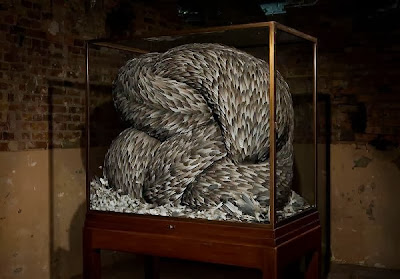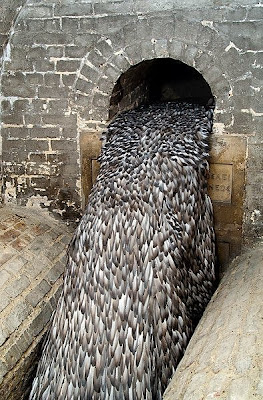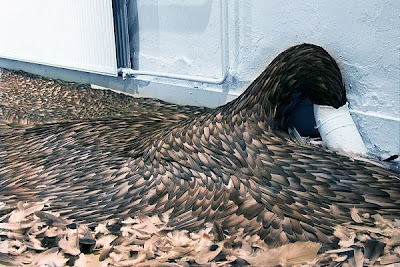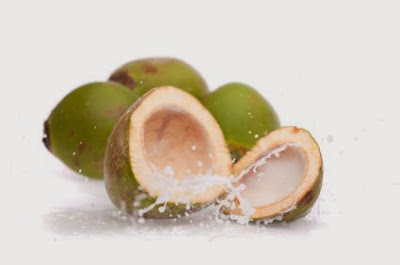This time i have found an amazing piece of sheer art. This art involves bird feathers for a flow similar to that of water or similar fluids. These were destroyed by the US officers by order because of culture related problems.But you all are lucky i got the non-harmed pics from my friend. Take a Look.










Tuesday, March 29, 2011
Water Flow Art Using Feathers.......Now history.. read 2 know how.
7 facts About the library of congress never known
1. In the terms of shelf space alone, the Library of Congress is the largest library in the world.
2. The Library of Congress was formed as part of the Act of Congress that moved the nation’s capital from Philadelphia to Washington.
3. The Library of Congress was just a small library with roughly 3,000 books in it when British troops destroyed it by setting fire to the Capitol building as part of the War of 1812.
4. First opening in 1897, the building that was then known as the Library of Congress Building was renamed the Thomas Jefferson Building in 1980.
5. While the Library of Congress is open to the public and anyone who is at least sixteen years of age and in possession of a government issued photo identification card is allowed into the reading room, only members of Congress, Supreme Court Justices and their staff, Library of Congress personnel, and other government officials can actually check out books and remove them from the building.
6. The Library of Congress’ head librarian, a position known as the Librarian of Congress, is appointed by the President of the United States.
7. John J. Beckley was the first Librarian of Congress and served in that role from 1802 to 1807. Interestingly, he is also credited by many as being the first political campaign manager.
The Library of Congress houses some of America’s greatest treasures and is an awesome place to visit and make use of. The institution has grown from a single room library housed in the capital building to a massive facility encompassing numerous buildings of its own. A visit to the Library of Congress is a great thing to do for anyone traveling to Washington D.C.
10 Strange And Weirdest Animals On The Earth

The star-nosed mole's snout has 22 fleshy tentacles that are used to identify food by touch. Often found in North America, it lives in wet lowland areas and eats small invertebrates, aquatic insects, worms and molluscs

The Hispaniolan solenodon, a strange looking shrew-like creature with a long snout and specialised teeth capable of delivering venom. Only two solenodon species exist today, one in Haiti and the Dominican Republic, and the other in Cuba

Seapigs live on, or just underneath, the bottom of the ocean and feed on the mud of the seafloor. Scientists haven't yet worked out how they are such a successful deep-sea creature

The blobfish is a gelatinous mass with a density slightly less than that of the water it occupies. This helps it maintain buoyancy. Hovering just above the sea-floor, the blobfish gobbles edible matter that floats past it

Discovered in 2005 in the South Pacific Ocean, this creature was dubbed the "yeti lobster" or "yeti crab". It lives at a depth of 2,200 metres on hydrothermal vents along the Pacific-Antarctic

The white turtle, whose creamy colour is offset by a few hints of pink, features prominently in Chinese culture - a character in Journey to the West is turned into one for his wrongdoings

The long eared jerboa is a nocturnal mouse-like rodent found in the deserts of China and Mongolia. It has a long tail, long legs and extremely large ears. Being such a rare creature, it is in danger of extinction

The aye-aye shares a lot in common with the woodpecker - it taps trees to find grubs. When food is located it uses its rodent-like teeth to gnaw a hole, then digs them out with its long middle finger

The saiga's unusually over-sized, and flexible, nose warms up the air in winter and filters out the dust in summer

With their unusual feeding habits and slime-producing capabilities, the hagfish has been dubbed the most "disgusting" of all sea creatures
Facts About Sleeping You Didn't Know

- The record for the longest period without sleep is 18 days, 21 hours, 40 minutes during a rocking chair marathon. The record holder reported hallucinations, paranoia, blurred vision, slurred speech and memory and concentration lapses.
- It's impossible to tell if someone is really awake without close medical supervision. People can take cat naps with their eyes open without even being aware of it.
- Anything less than five minutes to fall asleep at night means you're sleep deprived. The ideal is between 10 and 15 minutes, meaning you're still tired enough to sleep deeply, but not so exhausted you feel sleepy by day.
- A new baby typically results in 400-750 hours lost sleep for parents in the first year
- One of the best predictors of insomnia later in life is the development of bad habits from having sleep disturbed by young children.
- Dreams, once thought to occur only during REM sleep, also occur (but to a lesser extent) in non-REM sleep phases. It's possible there may not be a single moment of our sleep when we are actually dreamless.
- REM dreams are characterised by bizarre plots, but non-REM dreams are repetitive and thought-like, with little imagery - obsessively returning to a suspicion you left your mobile phone somewhere, for example.
- Certain types of eye movements during REM sleep correspond to specific movements in dreams, suggesting at least part of the dreaming process is analagous to watching a film
- Dreams may not serve any purpose at all but be merely a meaningless byproduct of two evolutionary adaptations - sleep and consciousness.
- Scientists have not been able to explain a 1998 study showing a bright light shone on the backs of human knees can reset the brain's sleep-wake clock.
- British Ministry of Defence researchers have been able to reset soldiers' body clocks so they can go without sleep for up to 36 hrs. Tiny optical fibres embedded in special spectacles project a ring of bright white light (with a spectrum identical to a sunrise) around the edge of soldiers' retinas, fooling them into thinking they have just woken up. The system was first used on US pilots during the bombing of Kosovo.
- Seventeen hours of sustained wakefulness leads to a decrease in performance equivalent to a blood alcohol-level of 0.05%.
- The 1989 Exxon Valdez oil spill off Alaska, the Challenger space shuttle disaster and the Chernobyl nuclear accident have all been attributed to human errors in which sleep-deprivation played a role.
- Exposure to noise at night can suppress immune function even if the sleeper doesn’t wake. Unfamiliar noise, and noise during the first and last two hours of sleep, has the greatest disruptive effect on the sleep cycle.
- The "natural alarm clock" which enables some people to wake up more or less when they want to is caused by a burst of the stress hormone adrenocorticotropin. Researchers say this reflects an unconscious anticipation of the stress of waking up.
- Some sleeping tablets, such as barbiturates suppress REM sleep, which can be harmful over a long period.
- In insomnia following bereavement, sleeping pills can disrupt grieving.
- Tiny luminous rays from a digital alarm clock can be enough to disrupt the sleep cycle even if you do not fully wake. The light turns off a "neural switch" in the brain, causing levels of a key sleep chemical to decline within minutes.
- To drop off we must cool off; body temperature and the brain's sleep-wake cycle are closely linked. That's why hot summer nights can cause a restless sleep. The blood flow mechanism that transfers core body heat to the skin works best between 18 and 30 degrees. But later in life, the comfort zone shrinks to between 23 and 25 degrees - one reason why older people have more sleep disorders.
- After five nights of partial sleep deprivation, three drinks will have the same effect on your body as six would when you've slept enough.
- Humans sleep on average around three hours less than other primates like chimps, rhesus monkeys, squirrel monkeys and baboons, all of whom sleep for 10 hours.
- Ducks at risk of attack by predators are able to balance the need for sleep and survival, keeping one half of the brain awake while the other slips into sleep mode.
- Ten per cent of snorers have sleep apnoea, a disorder which causes sufferers to stop breathing up to 300 times a night and significantly increases the risk of suffering a heart attack or stroke.
- Snoring occurs only in non-REM sleep
- Teenagers need as much sleep as small children (about 10 hrs) while those over 65 need the least of all (about six hours). For the average adult aged 25-55, eight hours is considered optimal
- Some studies suggest women need up to an hour's extra sleep a night compared to men, and not getting it may be one reason women are much more susceptible to depression than men.
- Diaries from the pre-electric-light-globe Victorian era show adults slept nine to 10 hours a night with periods of rest changing with the seasons in line with sunrise and sunsets.
- Most of what we know about sleep we've learned in the past 25 years.
- As a group, 18 to 24 year-olds deprived of sleep suffer more from impaired performance than older adults.
- Experts say one of the most alluring sleep distractions is the 24-hour accessibility of the internet.
- The extra-hour of sleep received when clocks are put back at the start of daylight in Canada has been found to coincide with a fall in the number of road accidents.
Stoning -A cruel capital punishment
Origination of Ice Cream

While I'm a big fan of ice cream I must admit I have never pondered where the stuff came from. I'm guessing somewhere cold maybe? Nopes, the fact is entirely different.
A post at Paleontology News has put me right. Ice cream has its roots in ancient China and Arabia.
Ice cream can be traced back to the 3rd Century BC Chinese Emperor and his nobility who were served concoctions of fruit juices with snow and ice.
The recipes of the unusual dessert were kept secret, and were revealed only in the 9th Century BC.
There are references stating that cooled juices were very popular in the palace of the legendary King Solomon, and that the famous ancient Greek physician Hippocrates recommended ice cream for a better tonus and health improvement
Snow and ice were used in ancient Rome to prepare fruit drinks for the Roman emperor Nero (AD 37-68). Large ice cellars were built to preserve the frozen treat for extended periods of time.
Marco Polo, who traveled to China and tasted the icy dessert, is thought to have brought ice cream to Europe
When he came back to Italy from his trip, he shared some of the recipes with local chefs. In the middle of the 16th Century, ice cream conquered France when Ekaterina Medici fell in love with this dessert. She treated her guests with ice cream at formal dinners and fed it to her son, Henry III.
By the 17th Century everyone in France was scoffing Ben and Jerry's (or the equivalent).
With time, technologies of ice cream manufacturing were perfected. Ice cream cups were invented in France during the reign of Napoleon III (1852-1870).
Assorted ice cream was first created in Italy, and chocolate was first added to the treat in Austria. Well done the Austrians!
15 Coconut Facts That You Did'nt Know
Here are some facts about Coconut Water:
1. It's a natural isotonic beverage, with the same level of electrolytic balance as we have in our blood. It's the fluid of life, so to speak.
2. During the Pacific War of 1941-45, both sides in the conflict regularly used coconut water - siphoned directly from the nut - to give emergency plasma transfusions to wounded soldiers..
3. Most coconut water is still consumed fresh in tropical coastal areas - once exposed to air, the liquid rapidly loses most of its organoleptic and nutritional characteristics, and begins to ferment.
4. Coconut Water is More Nutritious than whole milk - Less fat and NO cholesterol!
5. Coconut Water is More Healthy than Orange Juice - Much lower calories
6. Coconut Water is Better than processed baby milk- It contains lauric acid, which is present in human mother's milk
7. Coconut water is naturally sterile -- Water permeates though the filtering husk!
8. Coconut water is a universal donor-- Its identical to human blood plasma
9. Coconut Water is a Natural Isotonic Beverage - The same level we have in our blood.
10. Coconut water has saved lives in 3rd world countries thru Coconut IV.
11. Coconut water is the very stuff of Nature, biologically Pure, full of Natural Sugars, Salts, and Vitamins to ward off fatigue... and is the next wave of energy drinks BUT natural!', according to Mortin Satin, Chief of the United Nation's Food & Agriculture Organization.
12. Coconut water contains more potassium (at about 294 mg) than most sports drinks (117 mg) and most energy drinks..
13. Coconut water has less sodium (25mg) where sports drinks have around 41mg and energy drinks have about 200mg!
14. Coconut water has 5mg of Natural Sugars where sports and energy drinks range from 10-25mg of Altered Sugars.
15. Coconut water is very high in Chloride at 118mg; compared to sports drinks at about 39mg.




